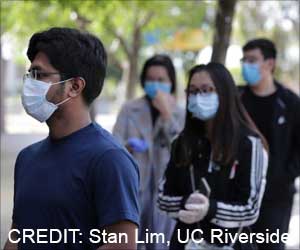Mechanisms of short- and long-term anosmia that occurs in COVID-19 is discovered.

‘Mechanisms of short- and long-term anosmia that occurs in COVID-19 is discovered. The SARS-CoV-2 virus infects sensory neurons and may cause persistent inflammation of the olfactory epithelium and the olfactory nervous system. It may also persist in the olfactory epithelium for several months thereby causing lingering symptoms.’





Until recently, there has been uncertainty as to whether the virus plays a direct role in anosmia. One of the earlier hypothesis assumed was anosmia was that a transient edema of the olfactory clefts inhibited airflow transporting odor molecules to the olfactory neurons (the familiar sensation of a blocked nose experienced during a common cold). Why Loss of Smell occurs in COVID-19
However the present study was conducted with COVID-19 patients and supplemented with tests on an animal model to explore the mechanism of anosmia.
It was found that SARS-CoV-2 infects sensory neurons and causes persistent epithelial and olfactory nervous system inflammation. Persistent clinical signs, anosmia in some patients is associated with prolonged epithelial and olfactory nervous system inflammation and lasting presence of the virus in the olfactory epithelium.
It was also observed that nasopharyngeal swabs may test negative by standard RT-qPCR even if the virus is still present at the back of the nasal cavities, in the olfactory epithelium. In light of this discovery, SARS-CoV-2 diagnosis by nasal brushing may be envisaged in addition to nasopharyngeal swabbing for the PCR test in patients experiencing loss of smell.
Advertisement
The team have shed light on the mechanism of COVID-19-related smell loss by revealing a series of chronological steps:
Advertisement
- The sensory neurons carry cilia that are responsible for receiving odor molecules. These are lost post-viral infection.
- The SARS-CoV-2 virus present in sensory neurons now infects it and prompts immune cell recruitment in the sensory organ.
- Now disruption of the olfactory epithelium (sensory organ) integrity linked to apoptosis (i.e. cell death) that disseminates to the olfactory bulb (first cerebral relay station in the olfactory nervous system).
- The virus may also persist in the olfactory epithelium, causing inflammation for several months thereby resulting in relevant persistent symtpoms.
- Following this, the inflammation and viral RNA may also present in several regions of the brain.
These observations should be used to adapt the diagnosis and management of long-term COVID-19 signs. The study also highlights the fact that infection of the olfactory neurons may provide a gateway to the brain and explain why some patients develop various psychological clinical signs (anxiety disorders, depression) or those of a neurological nature (cognitive decline, susceptibility to developing a neurodegenerative disease), for which further studies are necessary.
Source-Medindia














